Use Window Light to Make Great Portraits! November 4, 2016 – Posted in: Photography – Tags: enthusiasts guide to portraiture, how to take a natural portrait, jerod foster, natural portrait tips, portrait tips, Rocky Nook, Use Window Light to Make Great Portraits!, window light
I imagine some of your favorite natural light portraits are made with window light. Portrait photographers just can’t get enough of it! Window light is a form of directionally diffused light that not only allows a photographer to use great light while working indoors, but it also refers to directionally diffused light found in external environments. Call it a poor man’s studio lighting, but goodness is it nice.
Window light creates beautiful directionally diffused light only if the light coming in through the window is indirect.
This means the sun cannot actually be shining through the window onto your subject. That would be direct light. Indirect sunlight coming through an opening such as a window bathes your subject in less intense light, which can help control exposure of other non-sunlit areas in the frame. And, because the window is almost always larger than the sun relative to the size of your subject, the light will have a soft quality.
The quality of light changes based on the size of the light. It’s easy to previsualize window light and work with it. For instance, a small window will offer a harder directionally diffused light than a large window.
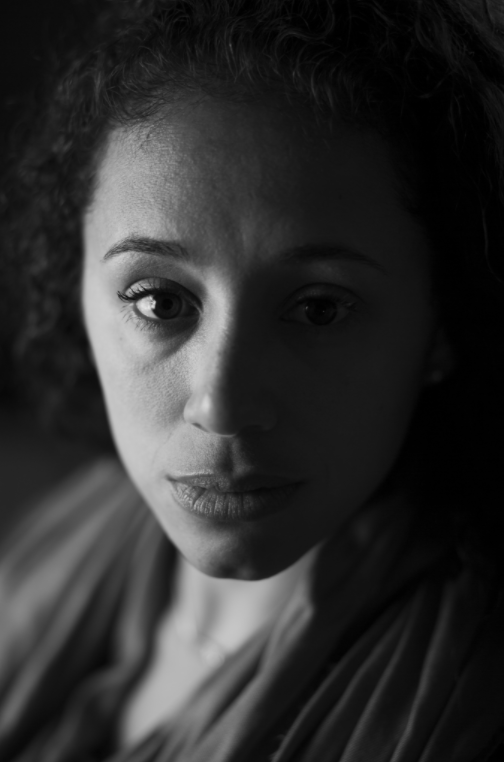
Although directionally diffused, the light hitting the subject is hard, and high in contrast since the window is relatively small compared to the subject (see Figure 18.3). ISO 200; 1/160 sec.; f/1.8; 85mm © Jerod Foster
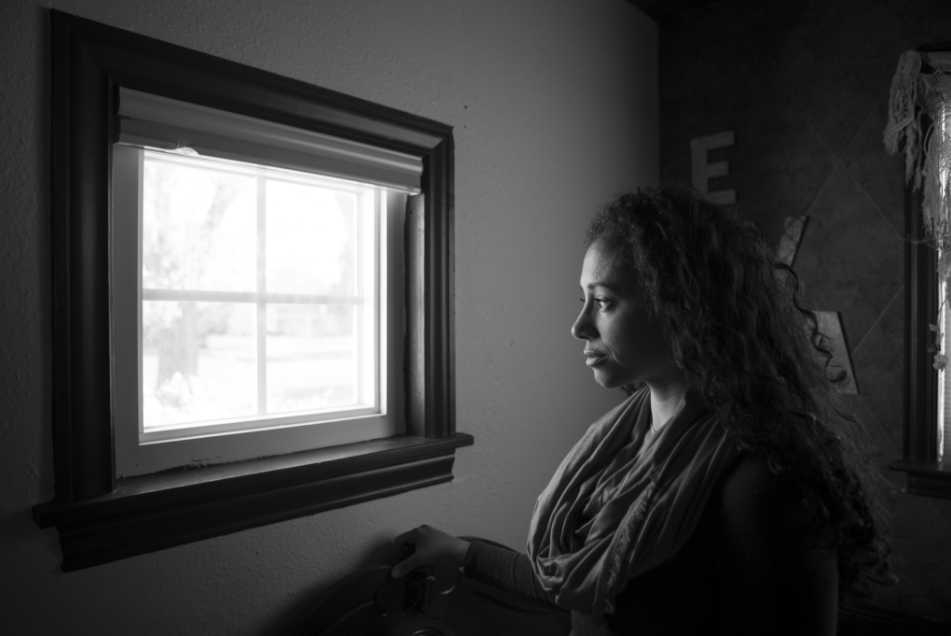
Compared to an adult subject’s body, an 18-inch square window is a rather small light source. © Jerod Foster
Likewise, moving a subject farther away from a window of any size will make that window a smaller, harder light source. If you want that extremely smooth directionally diffused light, find a relatively large window (a four-by-six foot window) and move your subject closer to it until you are happy with the quality of light As you do, the surface space of the light source will shine on areas of the face otherwise covered in shadow by facial features (the nose, eyebrows, cheeks, etc.) and fill them in with light.
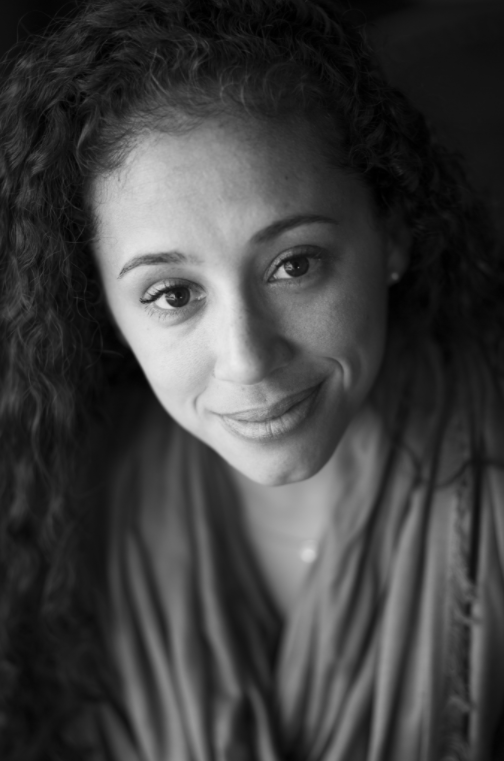
Increasing the size of the window increases the amount of coverage on your subject (see figure below). It also softens shadows, an effect that can be very appealing for general portraiture.
ISO 200; 1/160 sec.; f/1.8; 85mm. © Jerod Foster
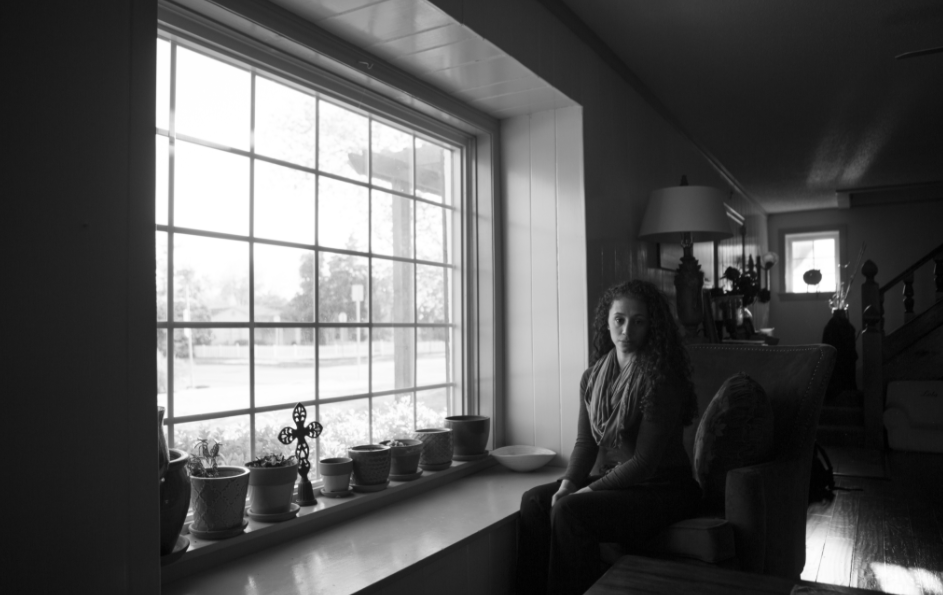
The closer your subject is to a light source (such as a window), the
softer the light will be. I’m attracted to photographing my subject
at one end of large windows so they can be turned in to the expanse of light. © Jerod Foster
Natural window light is relatively controllable, as long as the sun is up, since you can change the subject’s distance and position to the light source. Place your subject with the window parallel to their line of sight, and have them face you. This gives you soft hatchet (or side) lighting.

6 To provide NCAA football coach Tommy Tuberville a masculine look based on light alone, I turned him parallel to the large window in his office. This created a soft light that transitioned into darker shadow straight down the middle of his face.
ISO 800; 1/100 sec.; f/4; 105mm. © Jerod Foster
Turn your subject toward the window and the lighting more closely resembles a classic loop lighting scenario. Place your subject below the center of the window, and you’ll achieve an artistic Rembrandt style.
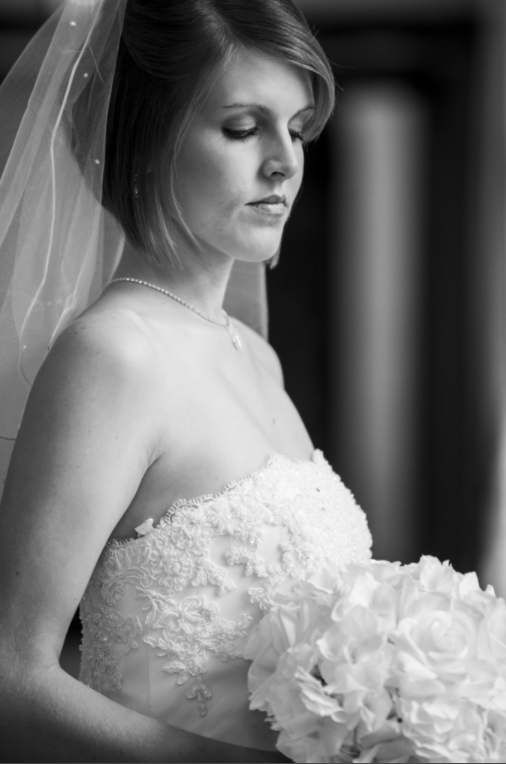
Turning the bride away from the camera and toward the large window allowed more light to hit the shadowed side of her form to close the shadow of her nose neatly under her right nostril. This shadow is the indicator of the classic Loop lighting style. ISO 400; 1/50 sec.; f/2.8; 200mm. © Jerod Foster
The term “window light” doesn’t just apply to light coming through windows. The same type of light—that nice, directionally diffused portrait light—exists as long as indirect light is serving as the primary, or key, light source for your portrait.
Outside, the first place I look to recreate this type of light is open shade. The shadowed side of a building is a great place to start. Even on overcast days, being close to the side of a large structure can be enough to create light and shadow across your subject’s face and body. I look for doorways, archways, caves, and just about anything that opens up into indirect light. The idea here is to have a more intense, but indirect, primary source of light hitting your subject from one side and some sort of structure that essentially blocks that same light from hitting the other side.

In this portrait, I placed professional speaker Gary Schwantz against a wall that blocked direct sunlight from hitting him, leaving open, indirect light from the sky as the primary, directionally diffused light source.
ISO 100; 1/1250 sec.; f/2; 85mm. © Jerod Foster
In review, window (indirect, open shade) lighting is good. A word of caution: for the most part, it is distracting to include the actual light source in the image. Unless you have a really good compositional or narrative reason for including the actual window in the portrait, it’s best to leave it out. More than likely, the window will be overexposed, and it might not fit the portrait very well. I encourage you to avoid this visual distraction if possible and conceptually appropriate.

A window can often be overexposed to the point that it detracts from the image more than it contributes. It’s often best to leave window light sources out of the frame and let the light do the talking.
ISO 400; 1/50 sec.; f/5.6; 45mm. @ Jerod Foster
Share Your Best Window-Light Shot!
Once you’ve captured a shot with great window light, share it with the Enthusiast’s Guide community! Follow @EnthusiastsGuides and post your image to Instagram, using the hashtag #EGWindowLight. Search that hashtag to be inspired and see other photographers’ shots, as well.
Plus, don’t forget to check out The Enthusiast’s Guide to Portraiture by Jerod Foster—available now!









